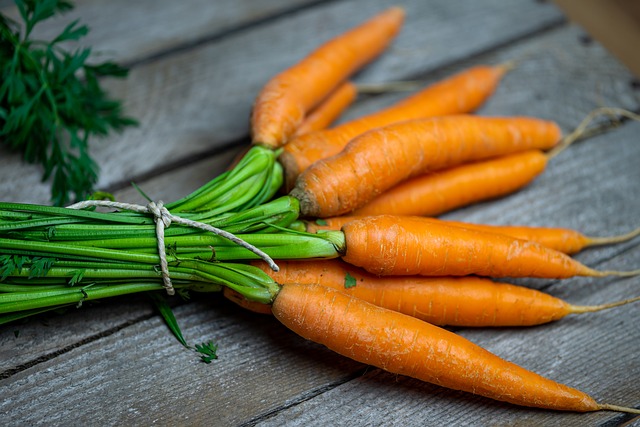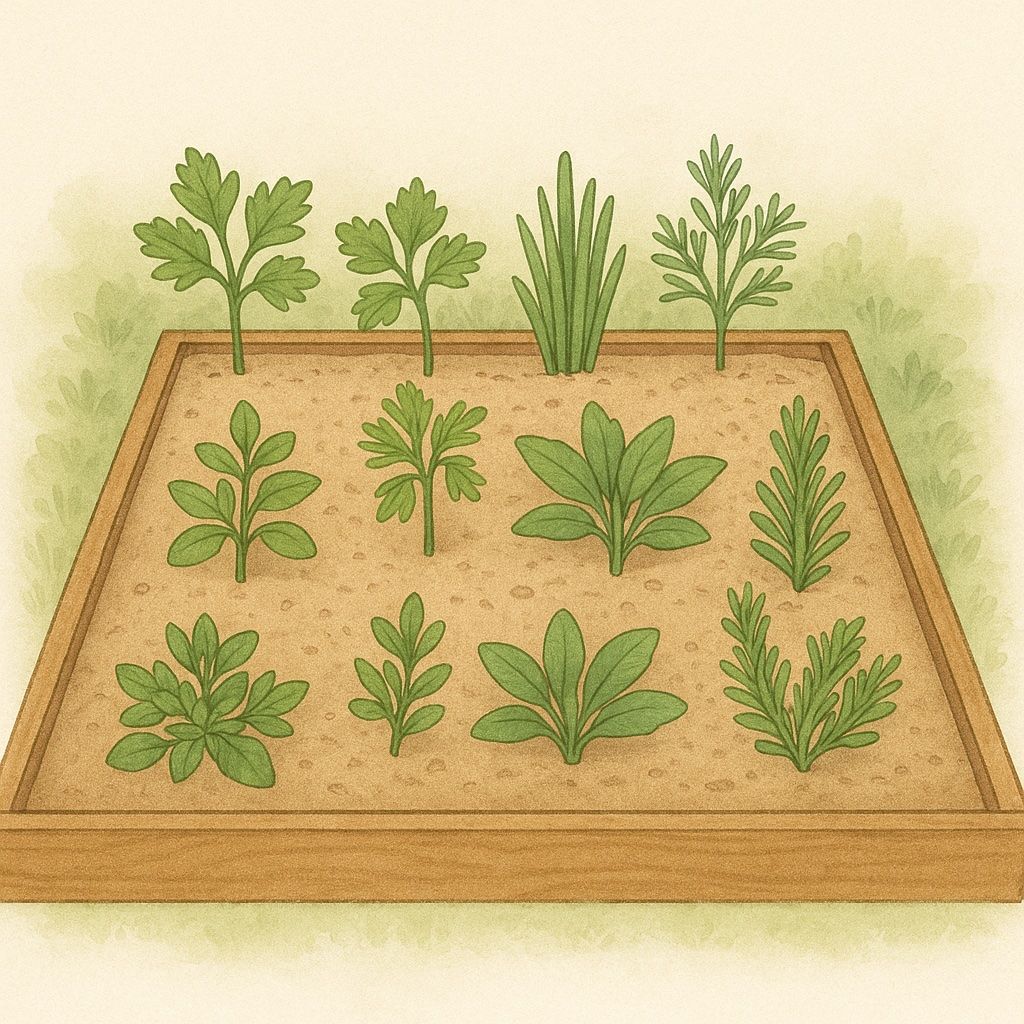Cultivating Crisp and Flavorful Carrots: A Comprehensive Guide
Introduction
Carrots, a versatile and nutritious root vegetable, are a delightful addition to any home garden. Their sweet, crunchy texture and vibrant color make them a popular choice for salads, soups, and snacks. This comprehensive guide will provide you with expert tips and techniques to ensure a bountiful harvest of delicious carrots.
Choosing the Right Variety
Selecting the right variety of carrot is the first step to ensuring a successful harvest. Different carrot types are suited to various climates and personal taste preferences, so understanding these factors will help you choose the perfect seeds for your garden.
- Climate Considerations – Select carrot varieties that are well-suited to your local climate. For cooler regions, consider Nantes or Imperator varieties. In warmer climates, opt for heat-tolerant types like Danvers Half Long or Super Nantes.
- Flavor Preferences – Different varieties offer varying flavors and textures. Experiment with various types to find your favorites.
Here are 10 of the most popular varieties:
Nantes – A classic variety known for its sweet flavor and tender texture. Nantes carrots are cylindrical with blunt ends, making them great for fresh eating.
Danvers – A popular heirloom variety, Danvers carrots are tapered and thick, perfect for heavy or rocky soils. They have a robust, slightly earthy flavor.
Imperator – Long and slender, Imperator carrots are the most common commercial variety. They have a sweet, crisp taste and store well.
Chantenay – Short and thick, Chantenay carrots are ideal for shallow or poor soils. They have a rich, sweet flavor and are often used for canning.
Atomic Red – This striking variety has vibrant red roots high in lycopene, a beneficial antioxidant. Atomic Red carrots have a sweet, mild flavor.
Purple Dragon – With a purple skin and orange interior, Purple Dragon carrots are both visually stunning and delicious. They have a slightly spicy flavor and are rich in antioxidants.
Little Finger – A small, tender variety, Little Finger carrots are perfect for container gardening and early harvests. They are very sweet and often used as baby carrots.
Kuroda – A variety favored in Asia, Kuroda carrots are thick and short with a very sweet flavor. They are heat-tolerant, making them ideal for warm climates.
Yellowstone – As the name suggests, this variety produces yellow carrots with a mild, sweet flavor. Yellowstone carrots are great for adding color to salads.
Parisian – Small and round, Parisian carrots resemble radishes more than traditional carrots. They are perfect for containers and rocky soils, with a sweet, crunchy texture.
Soil Preparation and Planting
Carrots thrive in well-prepared soil. Since the quality of the soil can directly affect root development, it’s essential to invest time in preparing your garden bed before planting. In this section, you’ll learn how to create the perfect environment for carrot seeds to grow.
- Ideal Soil – Carrots thrive in loose, well-draining soil with a pH between 6.0 and 7.0. Incorporate organic matter like compost or well-rotted manure to improve soil structure and fertility.
- Planting Timing – Plant carrot seeds 2-3 weeks before the last frost in the spring. In regions with mild winters, you can also sow seeds in the fall for a winter harvest.
- Seed Spacing – Sow carrot seeds 1/4 inch deep and about 1 inch apart in rows spaced 12-18 inches apart. Cover lightly with soil and water gently.
Master Gardener Tip: Carrot seeds are tiny and slow to germinate, so keeping the soil consistently moist can be a challenge. After planting the seeds, cover the bed or row with a wooden board or a piece of fabric to retain moisture and prevent the soil from drying out. Check daily, and once you see the first signs of germination (usually after about 7-10 days), remove the cover. This method helps create ideal conditions for even, healthy germination and avoids the common problem of patchy growth.It’s a simple but effective trick that often leads to better yields and carrot quality!
Steve, Your Digital Neighborhood Master Gardener
Care and Maintenance
Proper care during the growing season ensures that your carrots develop evenly and remain healthy. By following these care tips, you can maintain your garden and nurture strong, vibrant carrots.
- Watering – Keep the soil consistently moist but not waterlogged. Mulching around the plants can help retain moisture and suppress weeds.
- Thinning – Once seedlings are 2-3 inches tall, thin them to 3-4 inches apart to prevent overcrowding. This allows individual carrots to develop fully.
- Fertilizing – While carrots don’t require heavy fertilization, a balanced, low-nitrogen fertilizer can benefit growth.
- Pest and Disease Control – Monitor for pests like carrot rust flies and aphids. Row covers can protect young plants from these pests. Additionally, be vigilant for fungal diseases, especially in wet conditions.
Harvesting and Storage
Harvesting carrots at the right time is crucial for achieving their best flavor and texture. Proper storage ensures that your hard-earned crop lasts long into the season.
- Harvest Timing – Carrots are typically ready to harvest 70-80 days after planting. Check the size by gently pulling on a few carrots. If they are firm and crisp, they are ready.
- Storage – Store harvested carrots in the refrigerator, wrapped in a damp paper towel, or in a cool, dark place with sand to prolong their shelf life.
Common Growing Challenges and Solutions
Even experienced gardeners face challenges when growing carrots. From forking to pest control, here’s how to tackle common issues and keep your carrots growing strong.
- Forking – Carrots may become forked if the soil is too hard or rocky. Ensure proper soil preparation before planting.
- Stunted Growth – If carrots are not growing to their full potential, check for overcrowding or nutrient deficiencies.
- Pests and Diseases – Implement pest control measures and monitor for signs of diseases.
- Bolting – To prevent bolting (going to seed), plant carrots at the optimal time for your climate and avoid excessive heat stress.
Conclusion
Growing carrots is a rewarding gardening experience that offers a delicious and nutritious harvest. By following these guidelines and addressing potential challenges, you can cultivate healthy and flavorful carrots in your own backyard.
More From Our Master Gardener
Recent Posts

When and How to Dig Up Dahlias – The Best Time, Storage, and Overwintering Guide for 2025 Blooms

When and How to Dig Up Peonies – A Step-by-Step Guide for Vibrant Blooms

Best Herbs to Plant in October 2025 – Fall Herb Gardening in Raised Beds Made Easy

The Bee Underground – Meet the Solitary Bees Living Beneath the Soil

Sweet Peas Growing Guide















